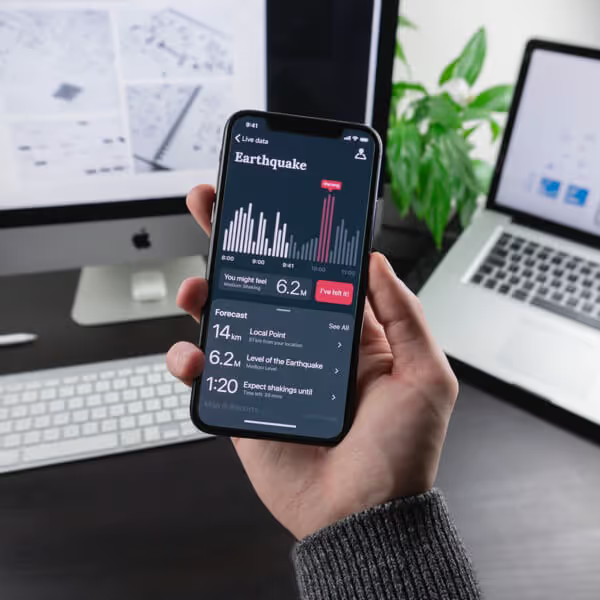or many B2C businesses, 60 leads might not seem all that much, but for B2B companies with high average sale values, especially those servicing the enterprise space, it can result in literally hundreds of thousands or even millions of dollars in revenue.
By using our simple and practical approach, you will not only be able to get at least 60 high-quality leads, but you will benefit from a higher sales conversion rate and a lower sales cycle which will ultimately reduce the cost of acquisition.
Create content that solves a problem
This statement might seem pretty obvious, but it’s surprisingly difficult to communicate a solution to a problem because often the perceived problem is different from the perspective of the buyer compared to the seller. Many businesses fall back on addressing generalist problems which all businesses experience including the desire to increase revenue, reduce costs, improve efficiency, and mitigate against risk. This approach, however, doesn’t work because they are universal problems and not specific enough. What’s worse is that a lot of other businesses – i.e. your competitors - are using the same tactic, so it’s not compelling or unique.
Segment your audience into groups which share similar problems and establish what those problems are. Typically, they are the obstacles to the universal problems mentioned above but which affect the day-to-day operations of a person or group of people. As a rule of thumb, create content targeted explicitly at each segment rather than trying to create content which attempts to cover all segments.
Target precisely
Once you’ve identified and defined your audience segments and you’ve created content which addresses a problem, promote your content by targeting each relevant segment. LinkedIn offers role-based and company-based targeting including job title, seniority, industry, company size, employee count, etc. Twitter offers interest-based and follower-based targeting (although some of the interest-based targeting is only available for US audiences). In addition to targeting interests such as technology or business through Twitter, target people who follow relevant accounts such as publications, competitors or complementary accounts.
If you have a list of prospects – which you have obtained with consent – you can upload the list of email addresses to LinkedIn, Twitter and Facebook and serve adverts directly to those individuals if they have an account. Generally, personal email addresses like Hotmail, Gmail, outlook, etc. are better than work email addresses in this instance.
Build a database
Some businesses feel uncomfortable with gating content – that is offering information in the form of a report, eBook or whitepaper in exchange for personal information including an email address – but it’s a great way to qualify - and disqualify- leads.
If your content is relevant and compelling to your target audience, then only those with interest in what you are selling will engage with it. If prospects are willing to give up their email address, then it’s a good sign that they are on a journey to solving a problem they are experiencing and will soon be ready to start a dialogue with the right solutions provider. Sometimes people will give fake names, and while that’s not ideal, it does actually disqualify them as poor-quality leads who aren’t ready or willing to start a dialogue.
Having a database of qualified and unqualified prospective customers provides valuable insight into a business’ market and will reduce the cost of advertising investment as delivering content, offers and messaging via email is free.
Nurture leads
While you can get 60 or more high quality leads in only two short weeks, if you have a long sales cycle - like most businesses with high average sale values do – it’s likely that these leads won’t become sales for a while. It’s essential therefore to nurture them – ideally through online and automated activities so that your sales team can focus their time on client relations and more immediate sales opportunities.
Sending regular automated emails which offer relevant and compelling content to an existing database, and retargeting people who have visited your website but not provided their email address, are two effective ways to keep your brand front of mind to prospective clients so that when they are ready to buy, they will approach you directly.
This process of automating lead nurturing will shorten sales cycles and reduce the cost of acquiring sales as often the highest cost involved in a deal is staff remuneration which is restricted by time.
What to budget
We recommend covering at least two advertising channels. Twitter and LinkedIn work well for B2B businesses. Taking this multi-channel approach will enable you to target a wider audience and gather greater insights from each platforms data reporting capabilities.
The average click-through-rate (people who click on your promoted content) is 0.15% for LinkedIn and 0.90% for Twitter. The average cost per click is $4.83 for LinkedIn and $0.78 for Twitter, and the average cost per 1000 impressions is $7.13 for LinkedIn and $7.09 for Twitter.
To get 60 leads, you’ll need around 1000 clicks from each platform as not everyone who clicks will become a lead. This equates to 666,667 impressions for LinkedIn and 111,112 for Twitter.
Your advertising budget, therefore, will come to either $5,541 if you are paying per 1000 impressions or $5,610 if you are paying per clicks. We recommend paying per click as it is less risky. You can see from this that the more you spend, the more clicks you will get and the more leads you’ll be able to gather.
Remember to factor in other costs including having content created, a landing page developed, retargeting costs if you decide to incorporate it into a nurture program and to target further those 1,940 people who clicked but didn’t convert, ad design, and additional fees to manage your campaign if you are using external support resources.
Factors affecting your campaign performance
Not all businesses will experience the same results due to factors affecting the campaign. A weak or unfamiliar brand, bad timing, an inferior product or service, an unresponsive or out-of-date website, a saturated market, and low-quality content are some of these factors.
We offer a suite of online tools designed and developed to identify these gaps (and the opportunities they can provide by addressing them) so even if you’re not yet ready to run a campaign, contact us to help reduce the obstacles to your business’ potential and success.

.avif)
.avif)










